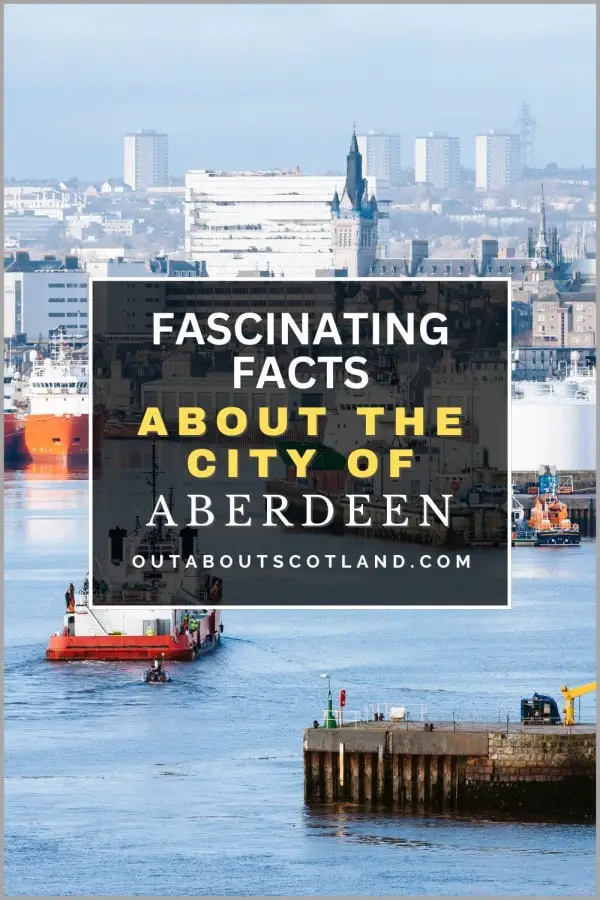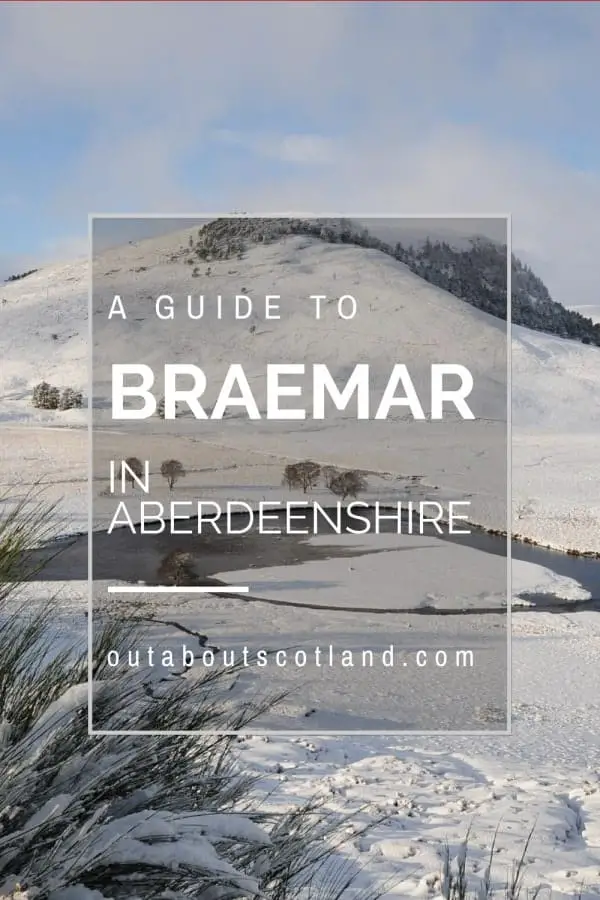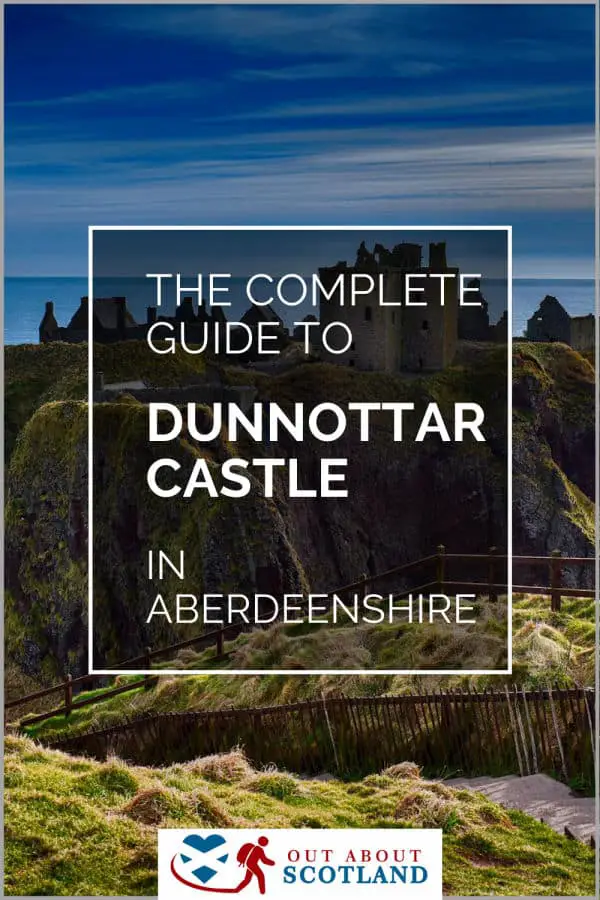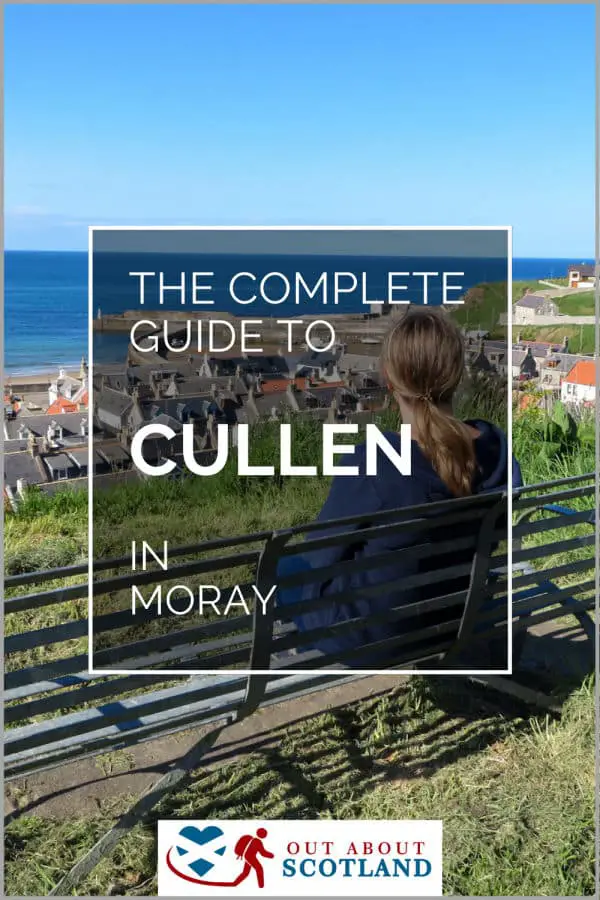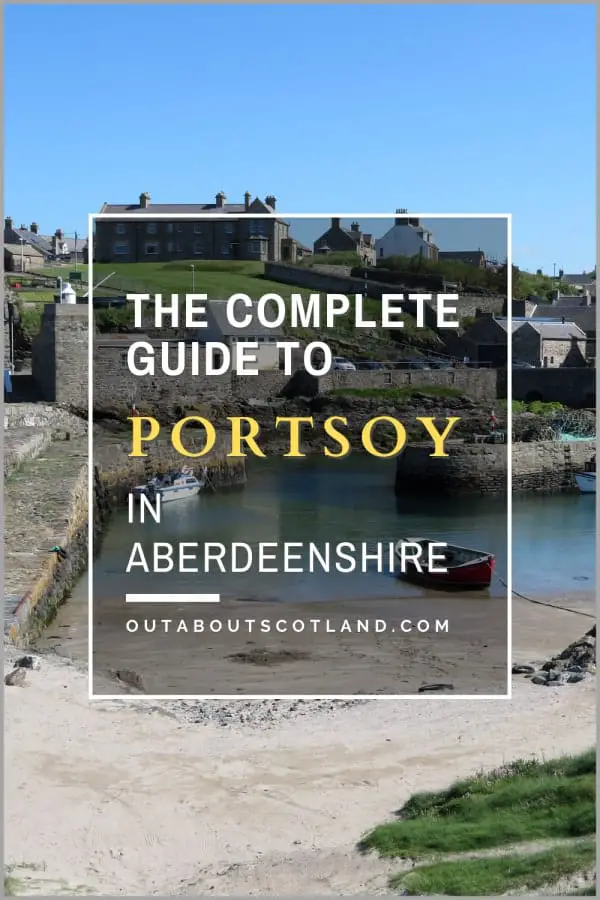The scenic region of Aberdeenshire on the northeast corner of Scotland is a firm favourite with visitors thanks to the remarkable number of historic castles dotted around the coastline. Discover the northeast castle trail in Grampian with this guide which includes facts about each site along with the history of Scottish castles and advice about visiting castles in Aberdeenshire.
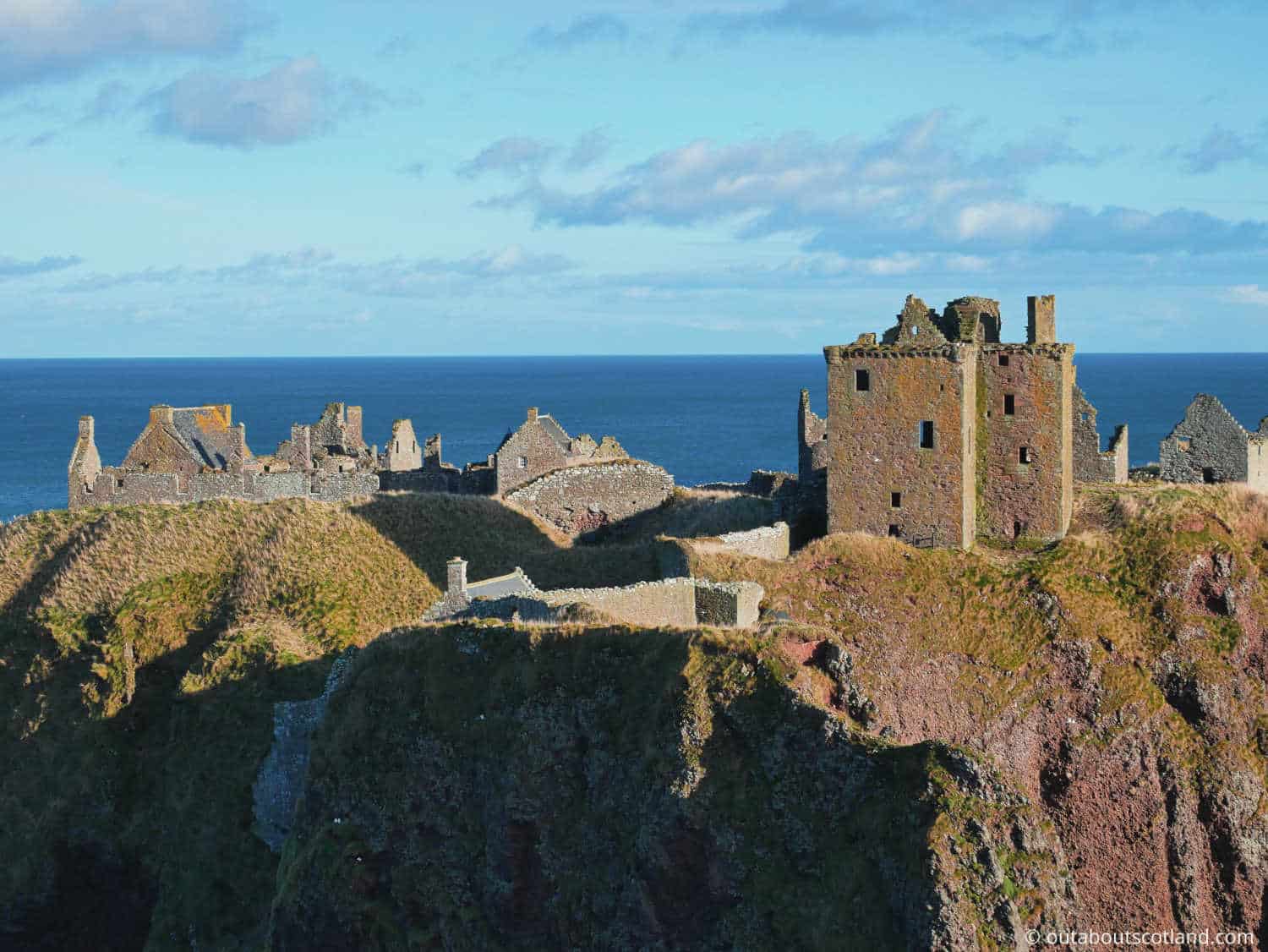
The North East Castle Trail in Aberdeenshire
Aberdeenshire has been called ‘the castle county’ for many years due to the fact this remote region of Scotland is home to more castles per acre than anywhere else in Britain. There are nearly 300 castles in the county, some of which are perched high on top of the remotest cliff tops, others that are nestled deep in thick pine forests, and many more situated in scenic rolling countryside.
The northeast is famous for its stunning landscapes where mountains meet lochs and sea-battered cliffs stand in front of quaint fishing towns, so it’s understandable that Aberdeenshire is one of the top tourist destinations in Scotland. The reason for the number of fortified buildings in the region is simple.
Surrounded to the north and east by the sea, the county was prized as the gateway to Scotland and for hundreds of years a constant barrage of invasions and bitter feuding between clans led to a need for defensive structures that could withstand prolonged attacks and sieges.
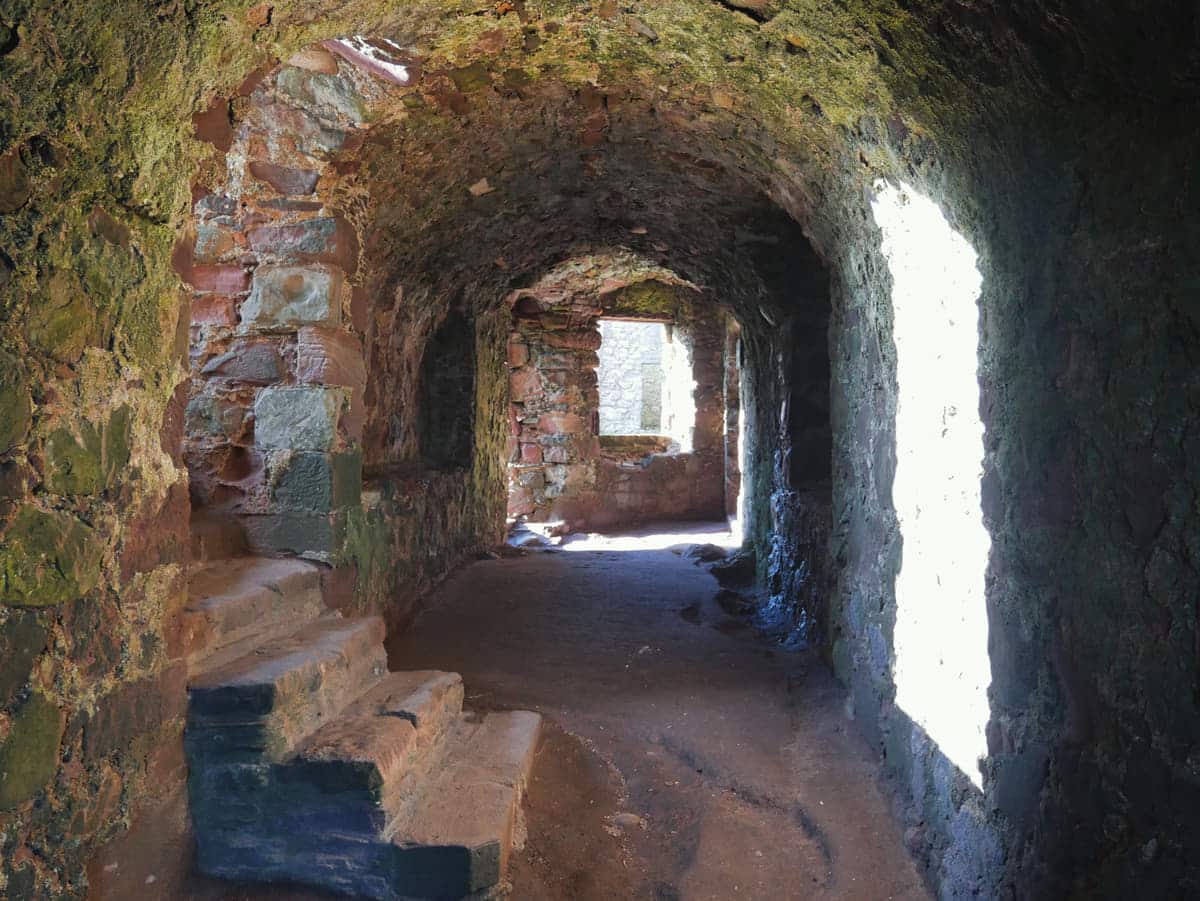
Today, tourists can explore these fortified buildings on the Aberdeenshire Castle Trail which takes visitors on a journey to discover the rich heritage of the county by way of its regal residences and towering turrets. Some are under the stewardship of the National Trust for Scotland and the Historic Environment Scotland Trust while others are privately managed, yet all are worth visiting to truly appreciate Aberdeenshire.
The National Trust for Scotland offers particularly good value membership and as well as allowing free entry to their historic buildings you’ll also be contributing towards the upkeep of some of Scotland’s most beautiful countryside and coastal areas. What better way is there to discover beautiful nature reserves and golden beaches than by setting off on an adventure to find an ancient castle?
With that thought in mind, you’ll find an Aberdeenshire castles list in the section below that will hopefully offer some inspiration for planning a tour around the region. That being said, If you’d prefer to be shown around by an expert guide then I recommend taking a look at the tours offered by getyourguide.com.
Protect Your Family From Scotland's Biting Midges
- Powerful, reliable protection for up to 8 hours
- Water- and sweat resistant
- Repels midges, mosquitoes, horse flies, sand flies, fleas and ticks
- Safe for use on adults, children over 30 months and pregnant women
- Non-sticky, moisturising with a pleasant fragrance
- Packaging may vary
The Aberdeenshire Castle Trail – Day One
Aberdeenshire Castle Map
- Dunnottar Castle
- Crathes Castle
- Drum Castle
Dunnottar Castle
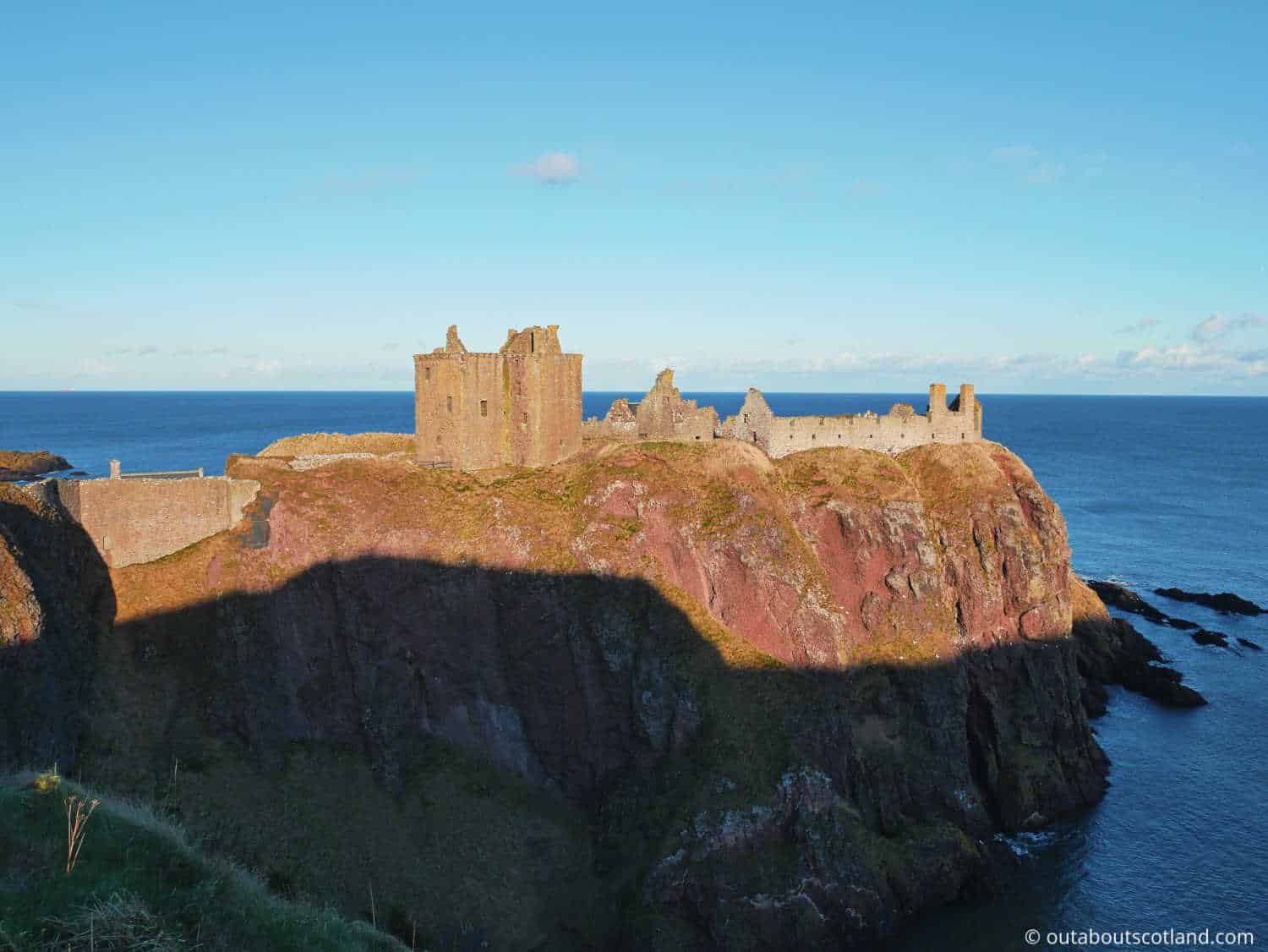
Possibly the most recognizable castle in Scotland, Dunnottar Castle sits on top of a remote pinnacle near the coastal town of Stonehaven. The castle was once home to the Earls Marischal – one of the most powerful families in Scotland – and although there have been chapels and other buildings on the rock since the 7th century the castle as we see it today is mainly from the 15th and 16th centuries.
Dunnottar Castle was pivotal in Scotland’s history with events including the Jacobite uprising where it alternately passed into the hands of both sides, and the Civil Wars of the 17th century where it served as the hiding place for The Honours of Scotland (the crown, sword and sceptre that now reside at Edinburgh Castle).
Visiting Dunnottar today rewards tourists with a memorable experience as they walk up the winding path that leads into the cliff-top fortifications. From there, tourists have uninterrupted views of the North Sea to the east and the Aberdeenshire countryside to the west, while the haunting ruins of the castle provide superb photo opportunities and lots of nooks and crannies for children to explore.
Book Tours in Scotland
Crathes Castle

Crathes Castle near Banchory is managed by the Scottish National Trust which has ensured that the building still looks like every inch of the imposing tower house that it was originally designed to be.
Built in the mid-16-century by the Burnett of Leys family, the castle features one of the most significant collections of portraits in Aberdeenshire, while externally there are over 530 acres of woodland and fields to explore. Perhaps the most striking feature though is the four-acre walled garden that includes a dizzying variety of plants and even has a croquet court on its immaculately manicured lawns.
The main castle building can be viewed by means of a designated route that runs through the enormous maze of rooms while the castle grounds have a number of walking trails that will take visitors on a journey around woodlands, marshes, ponds and fields. The more adventurous might like to have a go at the SkyWall, which is a tall climbing wall built on the site near the café, and the SkyTrek which is a high-level adventure activity near the car park.
Drum Castle
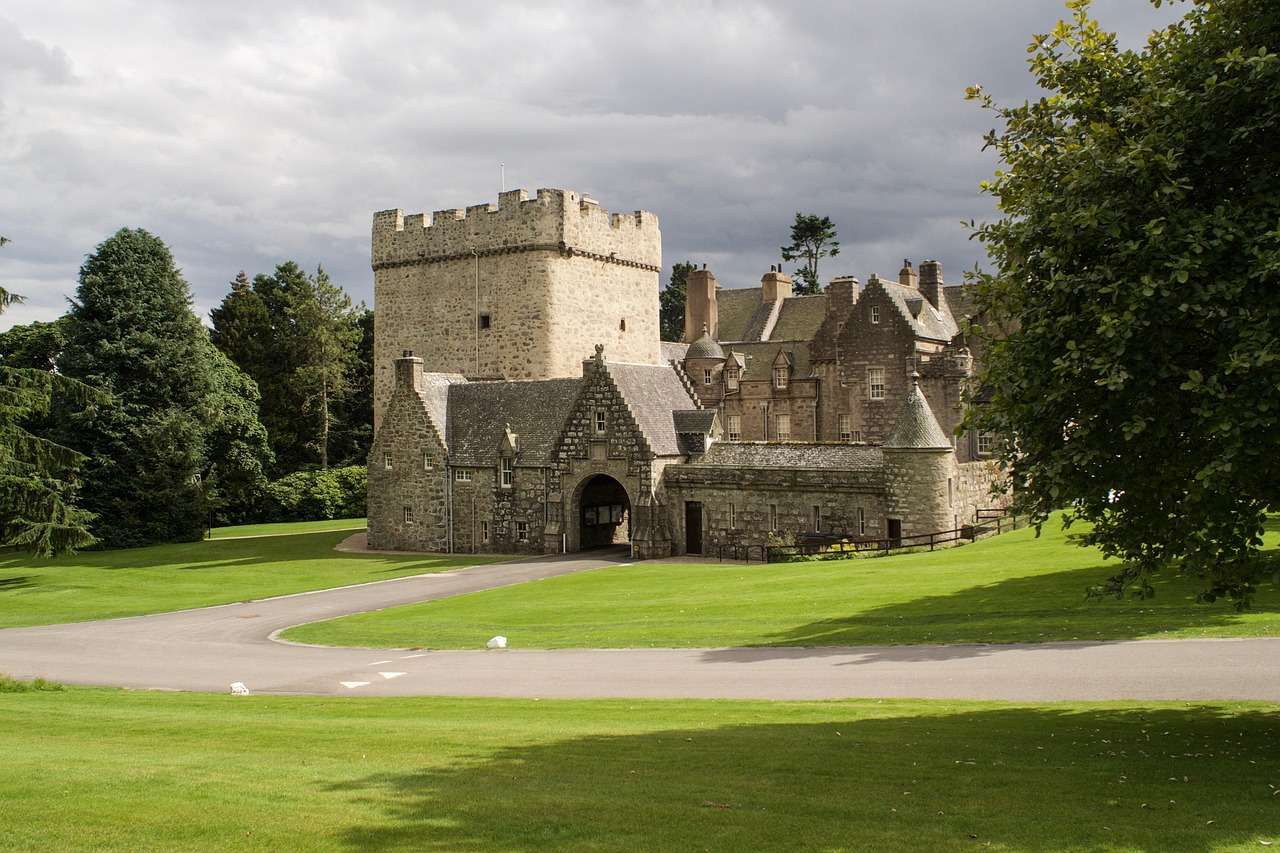
Once the ancestral seat of Clan Irvine, Drum Castle is an extensive series of buildings that have been added to a 13th-century tower house over the course of more than four hundred years. The castle played an important role in the nation’s history several times, most notably in the 1600s when it was captured twice during the Civil Wars.
This castle is a mix of buildings from several centuries and the maze of rooms in various architectural styles makes visiting Drum Castle quite unique compared to others you may have been to before. As you walk around the buildings you can’t fail to be surprised by the number of twists and turns the rooms will take you through as you explore each section.
Unlike many castles, this one is quite cosy inside and the Victorian-era modernization makes you wonder what it would be like to live there yourself. In fact, the Irvine family continued to live at Drum Castle until 1975 so you’ll get a real sense of what it’s actually like to live in an aristocratic family home as you explore this fascinating castle.
Protect Your Family From Scotland's Biting Midges
- Powerful, reliable protection for up to 8 hours
- Water- and sweat resistant
- Repels midges, mosquitoes, horse flies, sand flies, fleas and ticks
- Safe for use on adults, children over 30 months and pregnant women
- Non-sticky, moisturising with a pleasant fragrance
- Packaging may vary
The Aberdeenshire Castle Trail – Day Two
- Castle Fraser
- Tolquhon Castle
- Haddo House
Aberdeenshire Castle Map
Castle Fraser
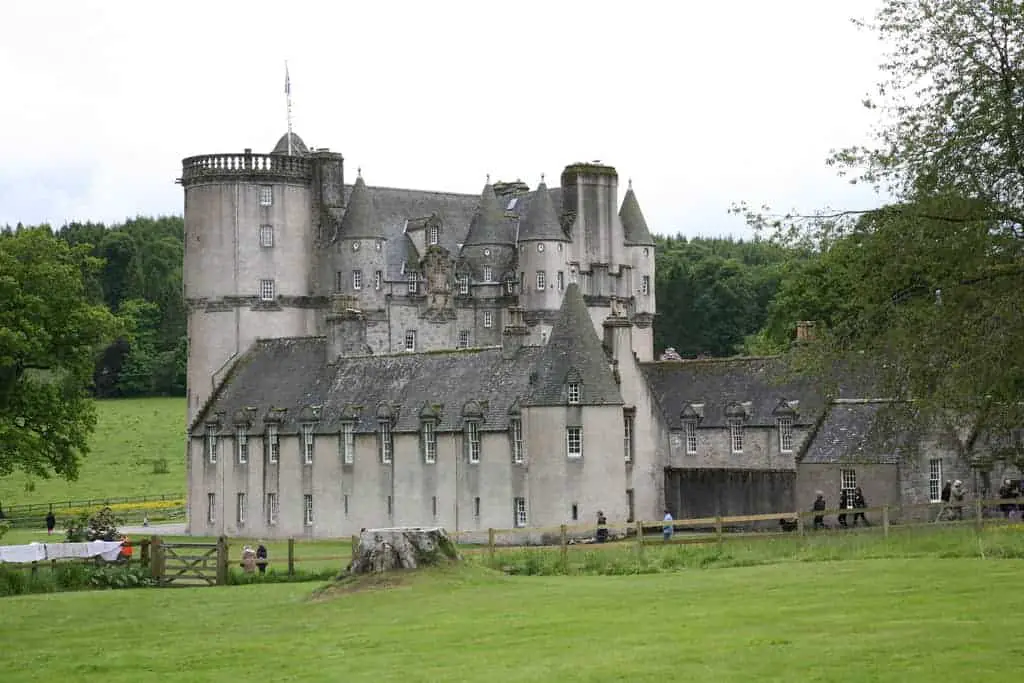
The elegant Castle Fraser is situated close to Kemnay in Aberdeenshire where it has been a dominant fixture on the landscape since construction began in 1575. This magnificent fortress is one of the largest tower houses in Scotland and it’s a fantastic place to soak up over 400 years of family history thanks to the care given to it by the Fraser family.
In recent years the castle has become extremely popular with tourists not only for its beautiful architecture but also for its 300 acres of landscaped grounds. Visitors can spend all day walking around the mixture of farmland, woodland and walled gardens before heading inside the main building where they will find secret staircases, hidden trap doors and the many colourful stories behind one of the largest portrait collections in Aberdeenshire.
Although Castle Fraser was officially completed in 1636 it has been extensively modernized over the intervening years with new additions like the stable block and the landscaped gardens that were added in the 18th century. Today, the castle is under the care of the National Trust for Scotland and entry is free for NTS members.
Guided tours of around one and a half hours duration are available which let you in on secrets such as the little spy holes that were installed in the walls of the Great Hall and the revealing stories behind the artefacts that were collected over years of globe-trotting by the Fraser family.
There are play areas outside for children to burn off energy and waymarked walks on the estate allow nature lovers to spot the frogs, newts, bats and myriad bird species that live on the grounds. All-in-all this castle offers a great family day out.
Book Tours in Scotland
Tolquhon Castle
The Historic Environment Scotland Trust cares for the very grand Tolquhon (pronounced ‘toh-hon’) Castle, and anyone with a love of history is guaranteed to enjoy wandering around the picturesque ruins. Located around 2 miles south of Tarves, Tolquhon Castle was built by William Forbes between 1584 and 1589 and was designed to impress visitors with its lavish carvings and fine details.
Features like the elaborate gatehouse still impress visitors today while the central courtyard and the huge main hall are fascinating to walk around.
Although the castle is impressive in its size it sadly fell into ruin after the Forbes family fell into debt at the end of the 18th century, and so it really is just a shadow of its former glory. However, many interesting footnotes from history still remain to be discovered by visitors such as the secret compartment in the laird’s quarters where he hid his valuables and the hidey-hole below the main stairs.
Haddo House
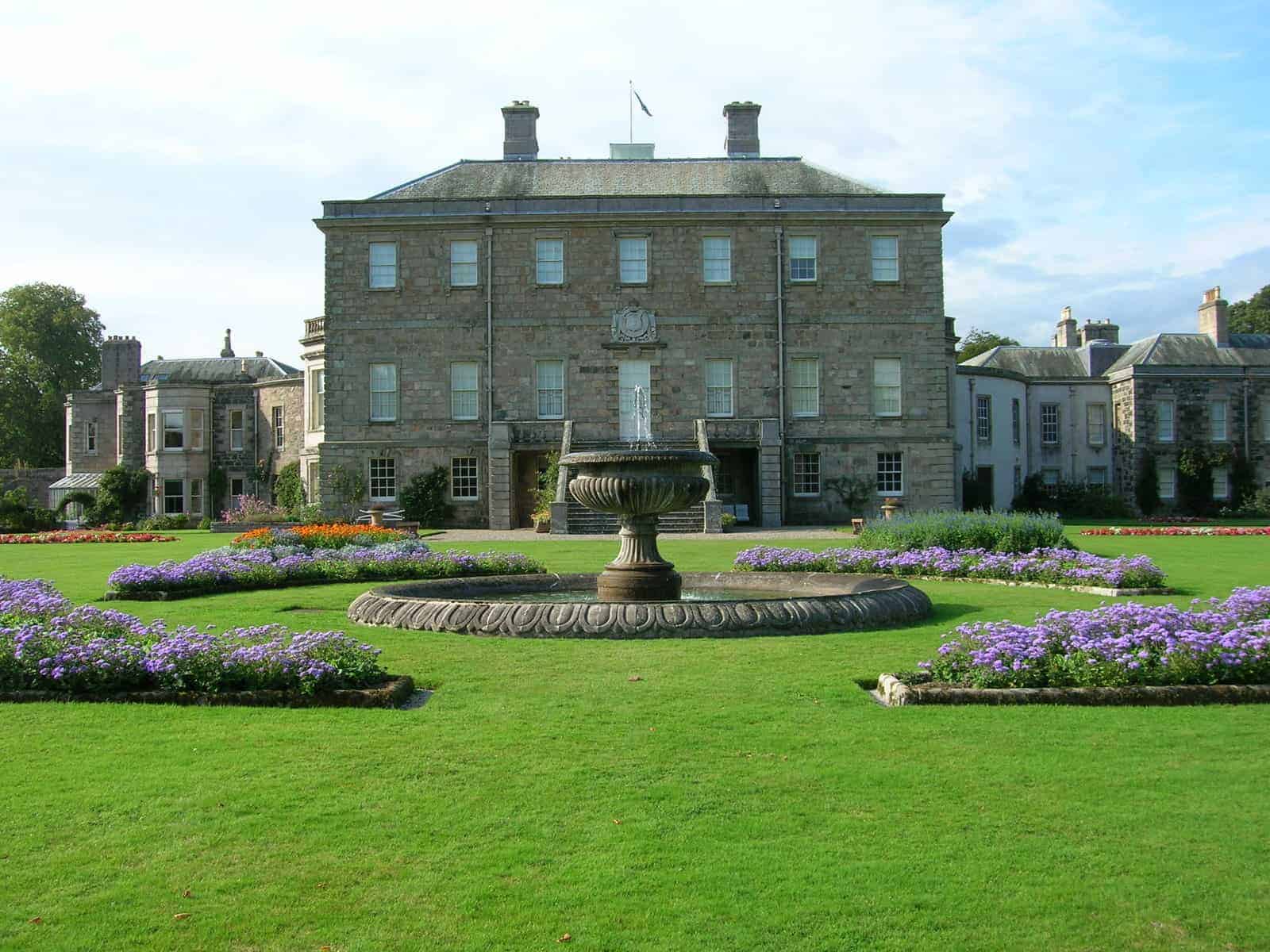
Haddo House is a stately home located 20 miles north of Aberdeen which has been owned by the National Trust for Scotland since 1979.
Originally the home of the Gordon family for nearly 300 years, the house is a spectacular example of early 18th-century architecture and features extensive collections of portraits, musical instruments and beautifully ornate furniture. Externally there’s a lovely terrace garden full of flower beds while an avenue of lime trees leads to Haddo Country Park.
Perhaps the most famous resident of Haddo House was George Hamilton-Gordon who was Prime Minister of Britain from 1852 to 1855. An avid art collector, he was fascinated by Renaissance artworks and he acquired the famous portrait of the ‘Haddo Madonna’ which still hangs in one of the rooms. This painting is thought to be the work of the 15th-century Italian artist Raphael and it’s one of the few examples of its kind in the country.
Guided tours are available that will take you through the interesting stories that live on in the artefacts that line the halls and decorate the rooms of this enormous building. Meanwhile, the outside grounds are definitely worth a visit as they not only feature extensive woodland walks but also include a wildflower meadow, a play park and several bird hides.
If you’re looking for somewhere to enjoy a summer picnic in Aberdeenshire, Haddo House really should be at the top of your list.
Protect Your Family From Scotland's Biting Midges
- Powerful, reliable protection for up to 8 hours
- Water- and sweat resistant
- Repels midges, mosquitoes, horse flies, sand flies, fleas and ticks
- Safe for use on adults, children over 30 months and pregnant women
- Non-sticky, moisturising with a pleasant fragrance
- Packaging may vary
The Aberdeenshire Castle Trail – Day Three
- Fyvie Castle
- Delgatie Castle
- Kinnaird Head Castle & Lighthouse
Aberdeenshire Castle Map
Fyvie Castle
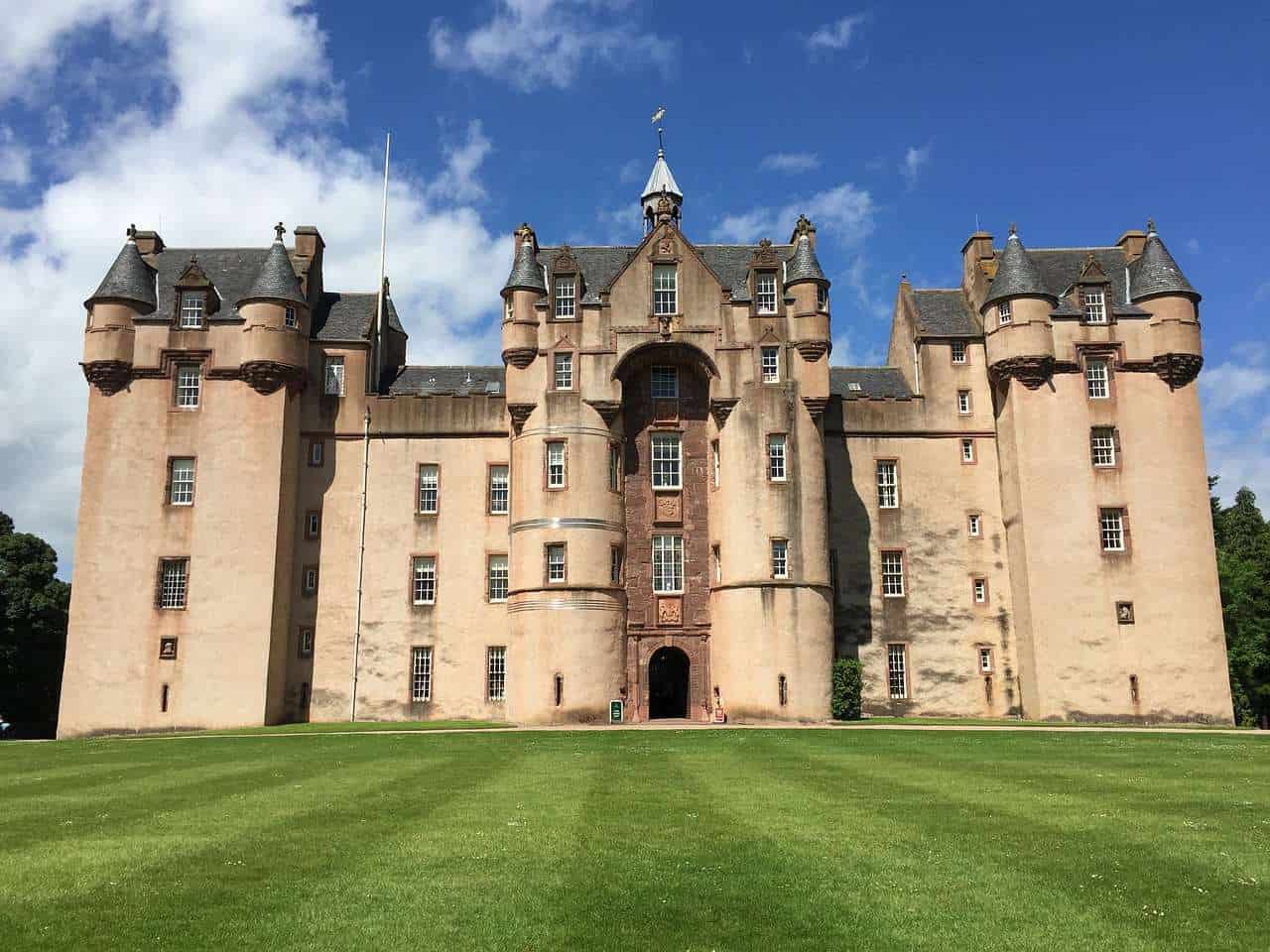
Fyvie Castle dates back to the 13th century when it was built by William the Lion as a royal stronghold and it remained under royal ownership until the late 14th century when it passed into several generations of noble Scots families; first Preston, then Meldrum, Seton, Gordon and finally Leith. Today, the fortress is owned and maintained by the National Trust for Scotland and is one of the top historic attractions in Aberdeenshire.
Within the rooms of the 800-year-old castle are some of the finest collections of antiquities, armour, portraits and furniture that you’re likely to find in any castle in Scotland, and you’re free to wander around the rooms either as part of a guided tour or by yourself.
The castle drips with history in every corridor, gallery and staircase, and the guided tours are definitely worth taking as you’ll learn surprising facts about Fyvie that you might otherwise miss, such as; the castle’s guests have included Robert the Bruce and Charles I, there’s a skeleton entombed within the walls of one of the bedrooms, and there’s a secret room somewhere in the castle that legend says must never be opened.
There’s an entire history of ghostly goings-on at Fyvie Castle which led to the TV series ‘Most Haunted’ presenting a show dedicated to it, so if you’re a fan of spooky tales you might enjoy hearing a few from the expert guides as they take you on a tour.
Moving through the rooms of the portrait collections you’ll find works by Raeburn, Romney, Gainsborough and many others, as well as lots of interesting additions to the castle including an ice house, a bird hide and a glass-roofed racquet court. There’s even a loch in the outside gardens with its own resident collection of wildfowl and your visit can be rounded off with a visit to the Victorian kitchen tearoom.
Book Tours in Scotland
Delgatie Castle
Delgatie Castle has stood near the village of Turriff since the late 16-century, but it’s known that a fortification of some kind has existed there since at least the 11th century.
A fine example of a Scottish keep, Delgatie Castle consists of the main keep building, an adjoining house and two wings that are offset from the main building. Although the castle was initially owned by the Earl of Buchan, after the Battle of Bannockburn it was given to Clan Hay and it remained their family home until passing into the care and ownership of the Delgatie Castle Trust.
Inside the building, you’ll find some of the finest painted ceilings in Scotland, a bedchamber visited by Mary Queen of Scots, various collections of paintings, and the widest turnpike stair in Britain. Outside, there’s a large area of pasture land where horses roam freely and there are cottages that are available for guests to rent as well as a river that’s a very popular spot for trout fishing.
One of the main draws to Delgatie is the Yester Room which serves delicious traditional afternoon teas on vintage china and tableware (the food won the Scottish Baking Award in 2015 and 2016), and the gift shop which sells a variety of gifts in the Clan Hay tartan.
Kinnaird Head Castle and Lighthouse
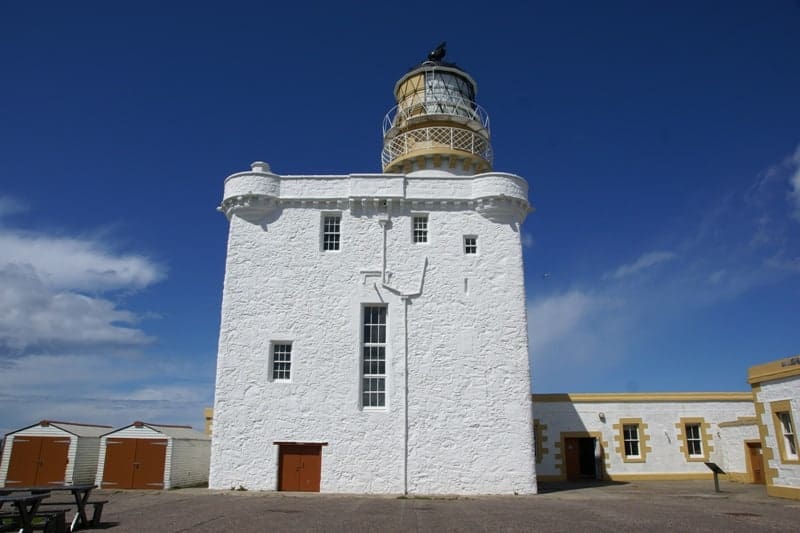
Kinnaird Head Castle and Lighthouse is one of the most unusual fortifications in the entire British Isles. Originally built by Sir Alexander Fraser in the late 16th century, it served as a family home until 1787 at which point it passed into the ownership of the Trustees of the Northern Lights, who converted it into Kinnaird Head Lighthouse.
Although no longer used as a lighthouse (a smaller unmanned beacon now takes that role), Kinnaird Head Castle retains many of the original lighthouse features that have been preserved just the same as the day when the last lighthouse officer walked out of its doors.
The location is perfect for taking photographs of the rugged Aberdeenshire coastline and there are plenty of interesting things to discover there, such as the nearby three-storey stone tower that was used as a storehouse but has legends of hauntings from the Fraser family member that leapt to her death onto the rocks below.
It’s quite incredible to find a working lighthouse tower built inside a castle and thankfully the site is now in the care of the Kinnaird Head Trust. The attraction is formed into two parts, with the castle and lighthouse combined in one section and the nearby Museum of Scottish Lighthouses in another.
The lighthouse features a climb up a spiral staircase which leads out to some amazing views across the North Sea while the museum exhibits interesting displays of lighthouse artefacts that have kept ships clear from the rocky Scottish coastline for hundreds of years, including the largest lens collection in Britain.
Special offer! Click this affiliate link to purchase a Historic Environment Scotland Explorer Pass from Viator. Your 5-day or 14-day pass allows free entry to more than 77 castles, cathedrals, distilleries and more throughout Scotland.
Protect Your Family From Scotland's Biting Midges
- Powerful, reliable protection for up to 8 hours
- Water- and sweat resistant
- Repels midges, mosquitoes, horse flies, sand flies, fleas and ticks
- Safe for use on adults, children over 30 months and pregnant women
- Non-sticky, moisturising with a pleasant fragrance
- Packaging may vary
Frequently Asked Questions
What are Scottish castles called?
Depending on the age there are several styles of castles in Scotland. The earliest fortifications include hill forts, brochs and duns.
From the 11th century, motte and bailey castles appeared followed by stone castles in the 1200s.
In the 14th century curtain-walled castled were preferred, followed by tower houses which were later updated in the Scottish Baronial style.
How many castles are there in Scotland?
There have been more than 2,000 castles in Scotland throughout its history but many of them do not exist today. Historic Environment Scotland currently lists around 500 buildings that can be classed as fortified dwellings.
What is the Castle Trail?
The Castle Trail is a route devised to take tourists around 19 of the best castles in Aberdeenshire including Balmoral (the royal family’s summer residence) and Dunnottar Castle which is famously perched on top of a cliff.
What are the best castles in Scotland?
Recommended castles for tourists include; Edinburgh Castle, Stirling Castle, Dunrobin Castle, Blair Castle, Inveraray Castle, Fyvie Castle and Kilchurn Castle.



